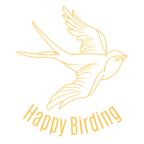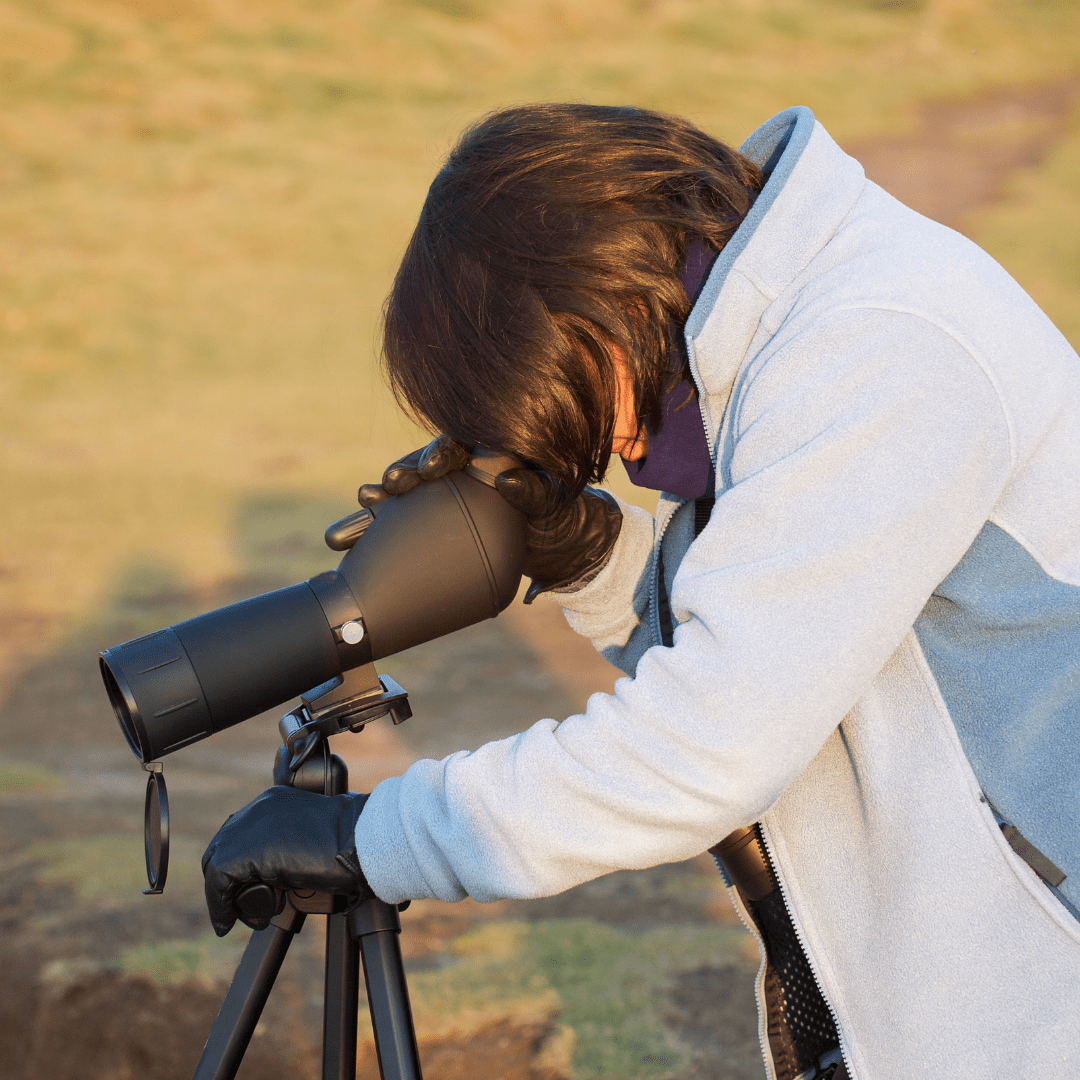Birdwatching is an accessible, educational, and inexpensive hobby. Most importantly, birdwatching connects people to nature.
Thanks to the power of flight, birds can move in and out of our proximity more nimbly than other animals. Therefore, birds tend to be the largest, most intelligent, and most fascinating wild animals that many people are exposed to on a daily basis.
Birds are ambassadors of the natural world and birdwatchers are simply the people who choose to enjoy nature’s splendor via birds.
In this beginner’s guide to birdwatching, we’ll provide a brief description of the hobby along with a few recommendations for getting started as a birdwatcher.

What Is Birdwatching?
Birdwatching is the name for the recreational observation of birds.
Everyone glances at pigeons, crows, and sparrows now and then. The difference between passive “seeing” versus active “watching” simply involves the level of interest and effort displayed by the observer.
If you’re engaging with birds by learning the names of species, peering through binoculars, or simply watching them closely for a few minutes at a time, you’re birdwatching.
The terms birdwatching and birding are sometimes used differently, with birding referring to a more serious dedication. At Happy Birding, we use both terms.
If you’re new to birdwatching, know that you don’t have to do, know, or accomplish anything in particular to call yourself a birdwatcher. However, if you want to begin expanding your knowledge of and engagement with the world of birds, start with these 10 tips.
10 Tips to Get you Started Birding!
1. Start By Learning to ID the Most Common Birds in Your Local Area
For many birdwatchers, learning to identify different species is central to the hobby.
Where a non-birder merely sees black-colored birds, a birder sees American crows, common grackles, and brown-headed cowbirds.
First, learn to ID the species that are most abundant in your part of the world.
For example, perhaps you live near an East Coast beach and see seagulls every day. With basic observation, you might notice that they aren’t all the same.
With a bit of research, you learn that you’re seeing lots of Herring gulls and Laughing gulls. Soon, you can tell the two apart—a Laughing gull has a black head and a Herring gull has a white head. Either one will steal your lunch.
One by one, you learn to ID more species.
As you learn to name the birds you see most often, you begin to appreciate the ones you seldom see and the ones you haven’t yet sighted.
2. Set Up a Bird Feeder and a Bird Bath
Lots of folks do most of their birdwatching in the comfort of their own backyards.
If you have a property with enough space, you can enhance your backyard birding by providing some food and water.
Set up a bird feeder, fill it with seeds, and enjoy watching your yard become the local avian hangout. Just be sure to research your feeder and food choices before committing. Only certain foods are appropriate, and different types of feeders and foods accommodate different types of birds.
It’s also helpful to provide a bird bath. For many birds, clean fresh water is often harder to find than food. Plus, it’s lovely to watch the delightful splashing that occurs at bath time.
If you want to go the extra mile, consider providing a few birdhouses.
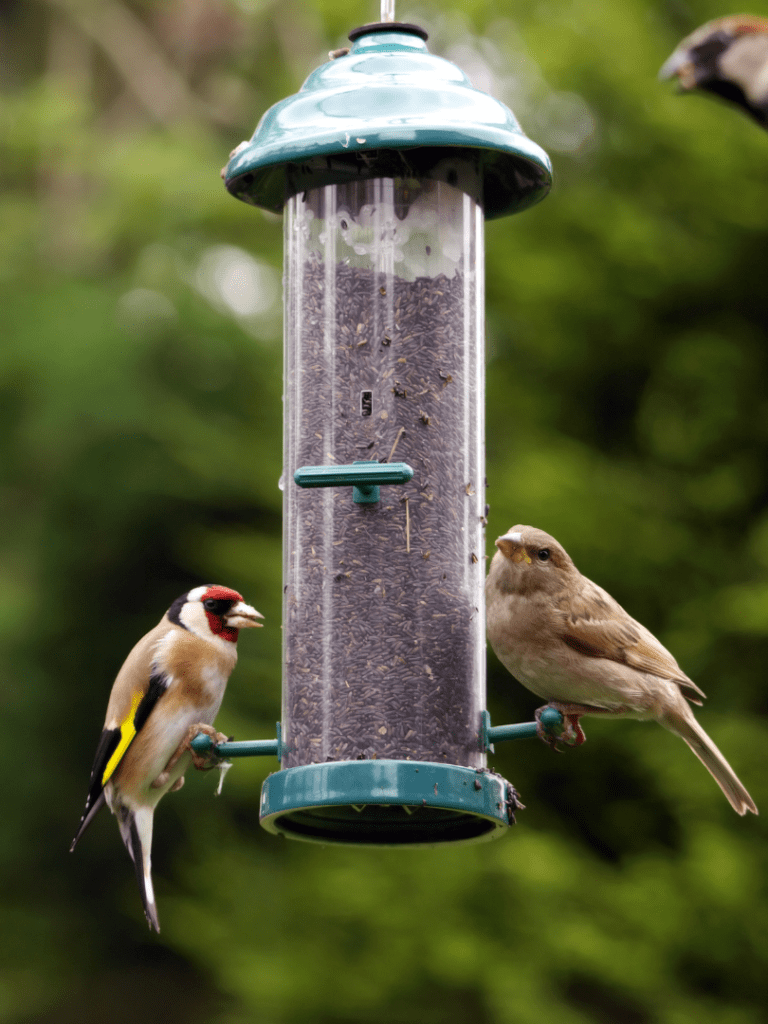
3. Adopt a Birdwatching Code of Ethics
To enjoy birding without causing harm, follow some simple ethical guidelines. These should include the following:
- Don’t prioritize your own enjoyment of wildlife over the well-being of wild animals and habitat
- Don’t intrude on sensitive habitats or disturb sensitive species
- When visiting parks and public lands, stay on designated trails
- Respect private property
- Avoid direct physical contact with birds
In time, you may learn to give back, rather than simply avoid harm.
The American Birding Association Code of Birding Ethics includes these words:
“Birders should always give back more than they take.”
We’ll discuss the concept of giving back below in item #10.
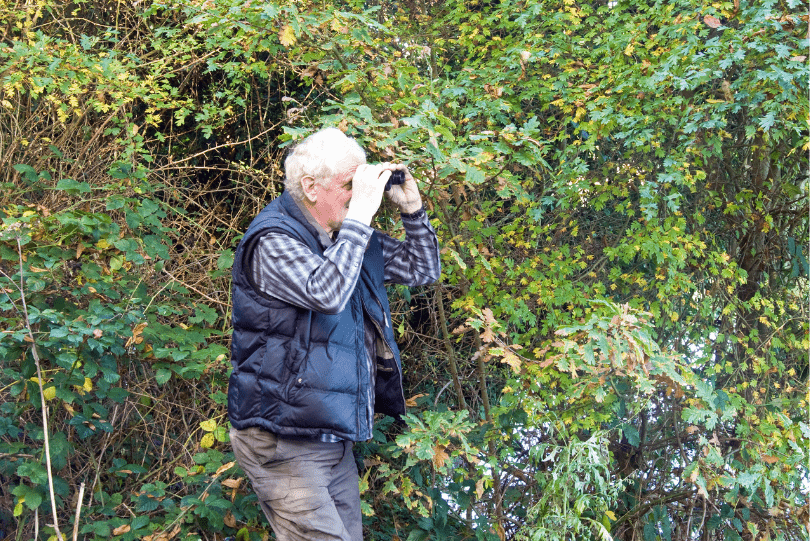
4. Get a Pair of Binoculars
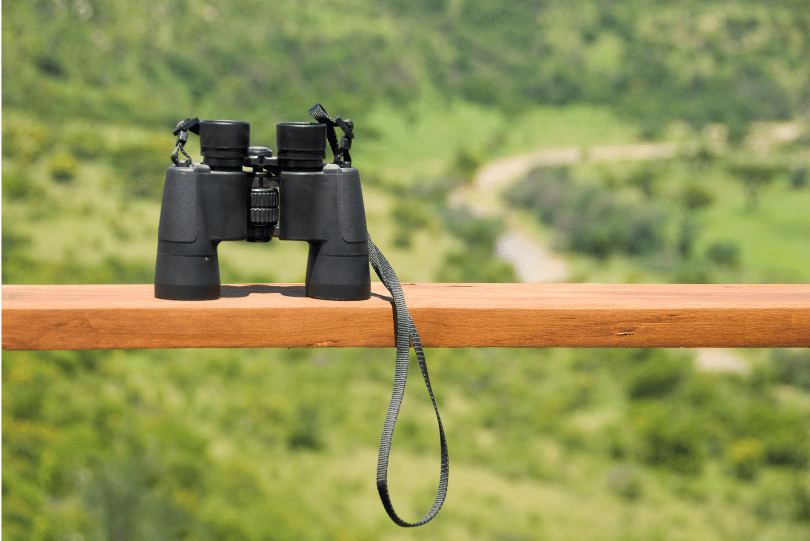
You don’t need binoculars for birdwatching, but they make an enormous difference. Where the naked eye sees a fuzzy brown blob, binoculars reveal beautiful tiny details from great distances.
If you’re unsure about the investment, try shopping second-hand for your first binoculars purchase. As long as they aren’t damaged, binoculars don’t degrade over time. Used pairs provide great value.
When choosing a pair, note that moderate magnification levels work fine for birding. It’s more difficult to maintain a steady view with higher levels of magnification (10x and above). Magnification levels of 7x—10x are ideal for most birdwatching.
5. Use Apps and Websites for IDs, Photo Sharing, and Citizen Science
Here are two excellent resources for birders, enjoyed by experts and beginners alike:
- The Merlin Bird ID App
- iNaturalist.org and the iNaturalist mobile app
There are a number of mobile apps that provide birding field guides and assist with species identification. One of the best is the Merlin Bird ID app.
Merlin asks three multiple-choice questions that allow users to plug in these basic facts about a bird: size, colors, and situation (swimming, soaring, etc). The app then provides incredibly accurate suggestions about what species you may have seen. You can also generate suggestions by submitting photos or even sounds.
iNaturalist is a citizen science social network for crowdsourcing species IDs. A user uploads a photo of a bird (or another organism) and indicates where the photo was taken. iNat then generates automated ID suggestions. You can choose one that you think is correct or submit a more general starter ID category, such as “hawks” or simply “birds.”
Submissions then enter the iNat news feed. Users suggest IDs on one another’s posts, sharing expertise and creating an enormous database of wildlife sightings.
6. Start a Birding Life List
A life list is a record of all the different species that a birder has seen. When a birder says they saw a lifer, that means they spotted a new species for the first time.
Keeping a list helps you track your relationship with birding over time. You can use a paper journal, a checklist, or an app or website such as Merlin or eBird to build your life list. Eventually, each place you travel to starts to represent the chance to add a species or two to your list.
Different birders have different standards for adding entries to their life lists. Some only add species that they photographed or “got a clean look” at, while others are less strict. In general, it’s best to only add a bird to your list if you’ve ID’d it with a high degree of confidence.
7. Meet the Dawn Chorus
In general, the best time of day for birdwatching is between dawn and around 11 am. Once the sun is high in the sky, most birds become less active.
At least once, make a point of waking up extra early and going to your favorite birding spot.
Or, if you live in a woodsy area, just step outside. You’ll hear what’s known as the dawn chorus—birds belting out their loudest songs of the day as the first bits of morning light hit the sky.
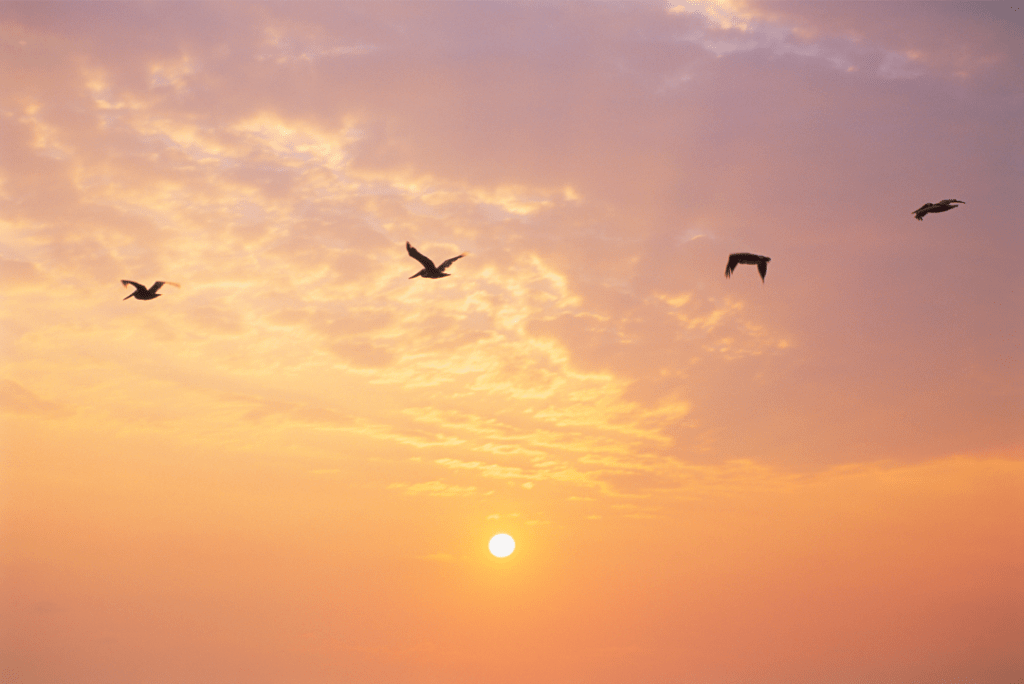
8. Get a Bird Field Guide
Alongside the growing popularity of bird ID apps, paper-book-form field guides remain popular among birders.
Field guides use colorful illustrations that emphasize and clarify the defining characteristics of different species. You can quickly skim through listings to find the bird you’re looking at.
Some field guides cover entire continents while others focus on smaller regions. The top names in bird field guides include National Geographic, Peterson, and Sibley.
9. Find Fellow Birdwatchers
Birdwatching can be enjoyed solo, with a partner, or in a group. If no one in your circle is particularly interested in birds, you can still share your hobby by combining it with other activities like hiking, camping, or disc golf.
If you’d like to meet some like-minded folks, know that there are most definitely birders in your area. According to the US Fish and Wildlife Service, 45.1 million Americans participate in birdwatching.
To connect with other birdwatchers, try Meetup or inquire about groups and events at your local wildlife centers, parks, and colleges.
10. Make the World a Better Place for Birds
If birdwatching brings you peace and brightens your world, then you may feel compelled to give back.
Here are a few actions you can take to help birds:
- If you own a cat, keep it indoors and encourage your friends and family to do the same
- Set up a feeder and a bird bath on your property
- Practice wildlife-friendly landscaping
- Donate to or volunteer with conservation organizations and land trusts
Birding is often just one part of a person’s broader interest in wildlife. Birdwatching may start with a kernel of interest, then grow into a hobby. From there, birding helps many people maintain a more compassionate, informed, and intimate connection with the natural world.

James has always been an avid outdoorsman. Since a kid, he kept a journal of all the different birds and species he saw. Now he wants to share his passion with other birders with Happy Birding!
